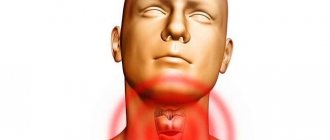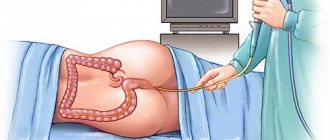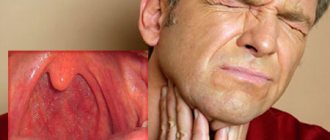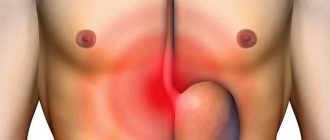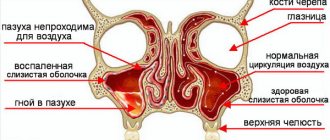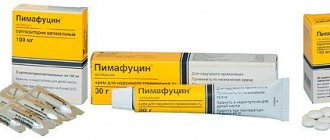Adults are more likely to suffer from pharyngitis, and children are more likely to suffer from tonsillitis. Genetics and lifestyle don't matter.
Pharyngitis and tonsillitis are common diseases that are often defined by the term “sore throat.” The pharynx connects the nasal and oral cavity with the esophagus and larynx. The tonsils are located at the top of the throat and serve to protect the body from infection. Children's tonsils are larger than adults', but they shrink over time. Tonsillitis is more common in children, while adults are predisposed to pharyngitis.
Pharyngitis and tonsillitis usually result from a viral infection such as the common cold or mononucleosis. Other causes include a bacterial infection with streptococci or a fungal infection (candidiasis). Smoking, drinking alcohol, and stress on the vocal cords often lead to the development of pharyngitis in adults.
Pharyngitis and tonsillitis are characterized by almost the same symptoms, which worsen within 12 hours after the onset of the disease:
- a sore throat;
- difficulty swallowing;
- ear pain that gets worse when swallowing;
- enlarged and painful lymph nodes in the neck.
Pharyngitis and tonsillitis may be accompanied by fever and poor health, especially if the cause is a bacterial infection.
In severe cases, swelling of the pharynx and/or tonsils may become so severe that difficulty breathing gradually begins. In some cases, abscesses may form on the tonsils, a condition called peritonsillar abscess.
There are a number of measures to relieve a sore throat:
- drinking plenty of hot or very cold liquids;
- eating a lot of ice cream;
- warm rinse with salt water or water with an aspirin tablet dissolved in it;
- use of painkillers (for adults - in the form of lozenges for sore throat);
- humidifying the air in the room where the patient is located (using a humidifier or other methods).
Pharyngitis and tonsillitis usually resolve within a few days after using self-help measures. However, if the pain intensifies and the throat condition has not improved within 48 hours, or if you experience difficulty breathing, you should consult a doctor. The doctor will take a throat swab to look for the cause of the infection. If you suspect mononucleosis, you need to take a blood test.
If the doctor suspects a bacterial infection, he will prescribe antibiotics. Peritonsillar abscess is sanitized under local or general anesthesia. In some cases, it is necessary to remove the tonsils.
In adults, relapses of tonsillitis are rarely observed, as frequent as in children. And vice versa - pharyngitis can recur throughout your life.
Complete medical reference book/Trans. from English E. Makhiyanova and I. Dreval. - M.: AST, Astrel, 2006. - 1104 p.
Chronic pharyngitis, ICD 10 code of which is J31.2, is characterized by a chronic inflammatory process in the mucous and lymphoid part of the pharynx. This form of the disease most often develops with alcohol abuse, smoking, due to severe air pollution and excessive stress on the ligaments and throat.
There are two forms of pharyngitis - acute and chronic. Quite often, this disease is isolated and accompanies professional activities. Sometimes pharyngitis can occur in parallel with sinusitis and tonsillitis.
How to cure chronic pharyngitis forever - this question can often be heard in the office of an ENT doctor. It is this specialist who is engaged in the fight against this disease. But first, let's look at the sources of chronic pharyngitis.
Symptoms of pharyngitis
Symptoms of pharyngitis will largely depend on what form of the disease a person has. However, the patient always has pain, soreness and discomfort in the throat.
Symptoms of acute pharyngitis
The acute form of the disease occurs diffusely and involves all parts of the pharynx in the inflammation process: nasopharynx, oropharynx and laryngopharynx.
- The disease rarely manifests as isolated inflammation. Most often it begins against the background of other infectious diseases of the upper respiratory tract: acute respiratory viral infections, acute respiratory infections, influenza, etc.
- As an independent disease, pharyngitis develops against the background of exposure of the pharyngeal mucosa to cold air, hot liquids, tobacco smoke, etc.
- The patient experiences pain when swallowing and complains of soreness and soreness in the throat. Most often, when swallowing food, no significant pain occurs, but it intensifies when performing a so-called “empty swallow” (swallowing saliva).
- The pain will radiate to the ears. This occurs when the tubopharyngeal ridges were involved in the inflammation process.
- Body temperature may rise to subfebrile levels. Although often the general condition remains normal or is slightly disturbed.
- During pharyngoscopy, swelling and redness of the mucous membrane lining the pharynx will be noticeable. The swelling spreads to the uvula. It is possible to detect areas of the mucous membrane covered with purulent plaque.
- Sometimes the upper cervical lymph nodes are involved in the inflammation process, becoming painful and swollen.
- A sore throat causes constant coughing.
Symptoms of chronic pharyngitis
It has been established that chronic pharyngitis has a more distinct localization than acute pharyngitis. In this case, one of the parts of the pharynx is affected. Chronic pharyngitis can be atrophic, catarrhal, granulomatous and hypertrophic.
Often, the chronic form of the disease is not an independent pathology, but a consequence of existing health problems:
- The patient experiences a feeling of scratching and dryness in the throat;
- Unpleasant sensations are accompanied by a dry cough;
- When examined, the mucous membrane of the pharynx is pale, dry, thin, and may have a varnish shine. Crusts and mucus are found in some areas;
- The catarrhal form of pharyngitis is characterized by mild pain when swallowing food, and a feeling of the presence of a foreign body in the throat. The cough becomes stronger in the morning and may be interspersed with nausea and vomiting. A person coughs all the time to get rid of mucous sputum, which constantly accumulates in the throat;
- The hypertrophic form of the disease is characterized by pronounced changes in the mucous membrane. It is possible that lymphoid tissue may grow in the area of the pharynx where the inflammation is localized;
- In the atrophic form of the disease, the mucous membrane is thinned, areas covered with crust are found on it, and areas with injected vessels are noticeable. Patients may have bad breath, and a constant dry throat forces the person to drink a lot of water. At the final stage of atrophic pharyngitis, the mucous membrane is very thin and painful;
- Granulosa pharyngitis is characterized by a more pronounced manifestation of symptoms than catarrhal and hypertrophic inflammation. The granulomatous form of the disease develops against the background of frequent exacerbations of pharyngitis, as well as in the presence of chronic pathologies of the gastrointestinal tract. An accumulation of granules occurs on the back wall of the pharynx.
Symptoms of pharyngomycosis
When the mucous membrane of the pharynx is damaged by fungi, discomfort in the throat occurs in the form of soreness, scratching, dryness and burning; negative feelings are very pronounced. In this case, the pain is moderate, increasing during meals and when swallowing saliva. Exacerbation of fungal pharyngitis is accompanied by intoxication of the body.
The throat becomes covered with a white or yellowish coating. It covers the soft palate and palatine arches. If the plaque is removed, then underneath it you can visualize bleeding areas, which are often the entry point for secondary infection.
Causes and symptoms of the disease
Chronic pharyngitis is a chronic inflammatory process of the mucous membrane of the throat. It is usually a consequence of untreated acute pharyngitis. The causative agents of the disease are staphylococci, streptococci, adenoviruses and herpes simplex viruses.
The chronic form can also appear as a result of fairly prolonged exposure to irritating substances on the mucous membrane, such as:
- Tobacco smoke, gases
- Dust
- Chemicals and other substances.
Chronic pharyngitis most often occurs in people who work in various types of industry and constantly inhale polluted air. Other factors include the following:
- Caries
- Frequent inflammation of the nose and throat
- Constant hypothermia, exposure to cold conditions
- Gastritis, pancreatitis, cholecystitis (gastrointestinal diseases)
- Allergy
- Avitaminosis.
Causes
The causes of the disease are divided into 2 categories: non-infectious and infectious. In the first case, the development of the atrophic process in the tissues of the pharynx occurs under the influence of the following factors:
- diseases of the gastrointestinal tract, in which heartburn develops;
- severe air pollution with toxic substances due to industrial emissions and exhaust gas;
- smoking.
A disease belonging to the second category occurs with inflammation and occurs for the following reasons:
- sinusitis of any form;
- chronic pharyngitis in previous forms.
A risk group for the disease is also identified. The likelihood of developing pathology increases significantly in the presence of predisposing factors, which are:
- metabolic disorders in the body;
- hormonal disorders;
- frequent infectious diseases of the nasopharynx;
- frequent ENT diseases;
- untreated teeth;
- infectious inflammatory diseases of the genitourinary system;
- excessive alcohol consumption;
- excessive use of vasoconstrictor nasal agents, which, flowing down the back wall of the pharynx, lead to damage to the mucous membrane;
- working in hazardous industries that involve inhaling chemical toxins;
- eating too hot food;
- eating food that is too cold;
- excessive amounts of spicy and sour foods in the diet;
- poor quality treatment of acute pharyngitis.
Also, the atrophic type of pharyngitis can also form in people who are often overcooled and exposed to damp conditions, but this phenomenon is not often observed.
Causes, provoking factors
Most often, thinning of the mucosa results from contact with harmful substances, for example, in production. These can be various chemical compounds, dust, dry air. Tobacco smoke has the same effect. Most often, atrophic laryngitis affects the population of hot countries, where sand and dust storms are common.
Some doctors believe that abuse of hot spices also leads to this form. They affect not only the pharynx, but also the larynx. This stimulates changes in its tissues.
Laryngitis of this type also develops against the background of acetic acid poisoning. Inhalation of vapors causes deep burns. Further healing occurs with scar formation and atrophy. The reasons include radiation injury, which occurs during the treatment of oncological processes in organs located in nearby organs.
For information about the causes and symptoms of laryngitis, watch our video:
Treatment
It is necessary to treat atrophic pharyngitis taking into account the pathogenetic mechanisms of this disease. First you need to eliminate all concomitant diseases that could provoke a chronic inflammatory process in the throat. In this case, nasal breathing should be completely restored, the nasal passages sanitized and tonsillitis cured. In addition, it is necessary to exclude the harmful effects of industrial and household factors, which also provoke an inflammatory process in the larynx.
- Frequent gargling with various sanitizing solutions and herbal decoctions.
- Lubricating the walls of the throat.
- Inhalations through a nebulizer using various medications.
- For severe pain, novocaine blockades are indicated.
- Cauterization of inflamed nodules.
- A set of physiotherapeutic procedures.
There are a great variety of medications that are intended for local treatment of chronic atrophic pharyngitis. The attending physician must select medications individually, based on the severity of the disease and the presence of concomitant diseases.
In the event that antibacterial agents are used during treatment, it must be remembered that after the death of all pathogenic microorganisms on the walls of the larynx, their place will most likely be taken by pathogenic fungi
Therefore, during treatment, it is very important to periodically treat the walls of the throat with antifungal drugs. However, moderation must be observed here, because the mucous membrane is already too thin, and with the constant influence of drugs it can completely lose its functions
This condition will lead to a deterioration in the patient’s condition and progression of the pathological process.
When selecting medications for local treatment of atrophic pharyngitis, the following requirements must be taken into account:
- The medicine should have a detrimental effect on pathogenic bacteria, viruses, and fungi.
- Medicines should not be quickly absorbed into the bloodstream from the mucous membrane of the throat. The longer they are absorbed, the more effective the treatment.
- Medicines should not contain components that can provoke an allergic reaction.
- Medicines should not have properties that irritate or dry out the mucous membrane of the larynx.
Herbal-based drugs are relatively harmless - Tonsilgon and Traumeel S. But all these drugs can cause allergies if a person is prone to it.
To strengthen local immunity, it is advisable to include immunocorrectors in therapy - Bronchomunal, Imudon, IRS 19 or Gepon. To reduce pain, your doctor may prescribe Strepphen or Tetracaine.
To liquefy thick secretions in the throat and gently remove sticky crusts, you can inhale with a nebulizer. For this purpose, take saline solution or mineral water. Constantly carrying out such a procedure allows you to quickly normalize the patient’s condition and stabilize the functions of the throat mucosa. If too many crusts collect in the throat, then it is advisable to prescribe inhalations with Bronchoboss or Fluditec.
Oily solutions of vitamins A and E will help to slightly soften the mucous membrane of the throat and stop the manifestations of pharyngitis. They are instilled into the nasal passages or the back wall of the larynx is carefully treated with a bandage wound on a wooden stick.
To remove dry throat and thin the mucus, blockades with novocaine and aloe are used. The course of treatment consists of 10 procedures, but between them you need to take a break of a week. You can rinse your larynx with sea water or preparations that contain it. The components contained in sea water help destroy harmful microorganisms and perfectly moisturize the walls of the throat.
If tests show that the disease is caused by pathogenic bacteria, then antibiotics must be prescribed. The most commonly prescribed drugs are the penicillin group, for example, Phenoxymethylpenicillin, which effectively fights streptococci. If the patient is allergic to drugs from the penicillin group, they are replaced with cephalosporins, which include Cefixime or Cefuroxime. In addition, macrolides - Azithromycin and Clarithromycin - can be prescribed for treatment.
The symptoms and treatment of atrophic pharyngitis in adults are quite specific. To avoid serious complications, you should consult a doctor when the first symptoms appear.
It is important to remember that the sooner treatment is started, the greater the chances of a full recovery.
Acute laryngitis
Causes
The cause of the disease is damage to the mucous membrane of the larynx and upper trachea, which leads to the development of severe inflammation, leading to the development of a typical clinical picture of the disease. The causes of damage to the mucous membrane are varied, ranging from excessive hypothermia or vocal strain (for example, in singers, teachers), and ending with colonization of the mucous membrane by pathogenic microorganisms during common acute infections (influenza, measles, etc.). The inflammatory process can involve either the entire mucous membrane of the larynx - a diffuse form of laryngitis, or the mucous membrane of the epiglottis, vocal folds, and the walls of the subglottic cavity.
Symptoms
With diffuse acute laryngitis, the mucous membrane looks sharply reddened; swelling is more pronounced in the area of the folds of the vestibule. Blood can leak out of inflamed, and therefore dilated, vessels, forming purplish-red dots on the mucous membrane (which is more common with complicated influenza).
Symptoms of the disease include:
- Pain when swallowing.
- Hacking cough. Subsequent cough with sputum production.
- Burning, soreness and dryness in the throat.
- Fatigue and weakness.
- Pain in the head and general weakness of the patient.
- Increased body temperature.
- Purulent inflammation of muscle structures.
- If the disease is infectious, white patches appear on the throat.
In the isolated form of acute laryngitis, sharp redness and infiltration of the mucous membrane can be expressed only in the epiglottis.
Often, an acute inflammatory process affects the mucous membrane of not only the larynx, but also the trachea (laryngotracheitis). In this case, a severe cough is often observed, usually with the release of sputum produced by the mucous membrane of the larynx and trachea.
Clinical picture
The clinical picture of acute laryngitis is characterized by a deterioration in the general condition, often the temperature rises. In the blood, laboratory tests determine indicators of the inflammatory process (the number of leukocytes and the erythrocyte sedimentation rate increase). If the process is predominantly localized in the area of the epiglottis or the posterior wall of the larynx, pain may be observed when swallowing. The voice becomes hoarse. Difficulty breathing can be caused by a narrowing of the glottis due to its spasm, swelling (or even the development of an abscess). In acute laryngitis, patients complain of a feeling of dryness, soreness, and scratching in the throat; The cough is initially dry, and later accompanied by coughing up sputum; the voice becomes hoarse, rough or completely silent. Sometimes there is pain when swallowing, headache and a slight (up to 37.4°) increase in temperature. The duration of the illness, subject to the regimen prescribed by the doctor, usually does not exceed 7-10 days.
Treatment
Treatment of acute laryngitis consists of eliminating the causes that caused the disease. For complete rest of the larynx, the patient is not recommended to talk for 5-7 days. It is also necessary to exclude hot seasonings and spices from food. Smoking and drinking alcoholic beverages is prohibited. Among the therapeutic procedures, warm drinks, gargling, warm inhalations recommended by the doctor, warmth on the neck (bandage or warm compress) are useful. The doctor may also prescribe medication.
False croup
Children under 6-8 years of age may develop a special form of acute laryngitis, namely the occurrence. Its manifestations are similar to those of laryngeal diphtheria - true croup. This complication is dangerous because it can lead to severe difficulty breathing as a result of narrowing of the lumen of the larynx due to the inflammatory process (edema), which, in turn, is often combined with spasm of the glottis. False croup in acute laryngitis is most often observed in children with exudative diathesis.
With false croup, an attack of the disease usually occurs unexpectedly, at night during sleep: the child suddenly wakes up covered in sweat, is restless, his breathing becomes more and more labored and noisy, his lips turn blue, and he has a “barking” cough. After some time (20-30 minutes), the child calms down and falls asleep. Body temperature during an attack remains normal or rises slightly. Attacks of the disease may recur that night or the next. If signs of false croup appear, you should immediately call an ambulance or take the child to the nearest hospital. Before the doctor arrives, the attack can be weakened by placing a mustard plaster on the area of the larynx, chest, and taking a hot foot bath (39°) for 5-7 minutes. Fresh air and warm drinks are also helpful.
Drug treatment of pathology
It is very difficult to treat the disease, so the doctor determines the therapy!
Treatment of atrophic pharyngitis should be comprehensive - they provide a local effect and treat the underlying disease.
Local treatment includes lubricating and irrigating the pharynx with various medications; we will analyze the most effective:
- Strepsils Plus is a red spray with a specific odor. Used for exacerbation of atrophic pharyngitis, quickly relieves pain and destroys pathogenic bacteria and fungi. Disadvantage: cannot be used by patients allergic to lidocaine.
- Vinilin is a balm that has antimicrobial, anti-inflammatory and wound-healing effects. Apply 2 times a day to the tonsils and back of the throat for a week. For atrophic pharyngitis caused by gastritis or esophagitis, you can also take half or a whole teaspoon orally at night. Quickly relieves inflammation of the pharynx and stomach. The downside is that it tastes extremely unpleasant and can cause nausea and vomiting in people with a high gag reflex.
- Various lozenges Doctor MOM, Septolete, Strepsils, Sage and Eucalyptus - make a person feel better, providing a slight anti-inflammatory effect.
- Rinsing with various herbs: chamomile, calendula - have a good antiseptic and anti-inflammatory effect. There are no downsides and can be used even by pregnant women.
General treatment
Important! We eat foods that do not injure the inflamed tissues of the throat
Includes all drug therapy aimed at the source of the problem:
- For diseases of the gastrointestinal tract, especially with exacerbation of gastritis, pancreatitis, Almagel has proven itself well - the drug has an analgesic effect, envelops the wall of the esophagus and stomach, reduces the aggressive effect of hydrochloric acid, and relieves inflammation. The patient feels the effect within a few minutes after administration. Use a measuring spoon 3 times a day half an hour before meals.
- Omeprazole is a unique drug that can protect the stomach from aggressive substances (for example, drugs), but the mechanism of its operation is not fully understood. Able to reduce the release of hydrochloric acid and general gastric secretion, providing a pronounced anti-inflammatory effect.
- For lovers of spicy and fatty foods and those suffering from pancreatitis, Pancreatin will come to the rescue. Take TB 15 minutes before meals during the acute period for about a month, then use it before a large meal - the drug reduces the load on the pancreas, since it is a synthetic analogue of its enzyme.
The most important thing in the treatment of subatrophic pharyngitis is diet. Do not drink coffee or strong drinks that irritate the mucous membrane of the dish. These include dishes with a lot of spices and seasonings, smoked and spicy foods, and nuts. During the period of remission, it is advisable to lubricate the mucous membrane with olive or peach oil; you can also instill them through the nose.
Medicines for the treatment of laryngitis in adults
Drugs for the treatment of laryngitis should be selected by a doctor. He prescribes them only after a comprehensive diagnosis.
Treatment of viral and bacterial laryngitis
If laryngitis was caused by viruses, then treatment comes down to eliminating unwanted symptoms. The patient needs to maintain speech rest, talk as little as possible, and not overstrain the vocal cords. This will reduce the severity of the symptoms of the disease.
Medicines for treating cough.
Cough is the main symptom of laryngitis, which causes a person maximum discomfort. To reduce its manifestations, you need to take medications that block the cough reflex.
The most frequently prescribed drug is Sinekod. It eliminates cough by influencing the central nervous system. The effect develops almost instantly. Within a few minutes you will be able to cope with the attack. Sinekod can be taken for laryngitis not only by adults, but also by children.
In addition to Sinecod, patients with laryngitis can be prescribed antitussive drugs such as: Omnitus, Stoptussin, Broncholitin, Linkas, Gerbion, Bithiodine. Read more about the pros and cons of these funds.
When the cough becomes wet, you need to start using medications that thin the mucus and make it easier to clear. This could be Alteika, Marshmallow syrup, Potassium iodide 3%, Thermopsis infusion.
A mandatory component of treatment is drinking enough fluid. Alkaline mineral water promotes the removal of phlegm, which is recommended to be slightly warmed before drinking, bringing it to a temperature of 32 degrees.
Drugs to reduce body temperature. Painkillers.
You can relieve pain and lower body temperature with Paracetamol or Ibuprofen. These drugs have a complex effect.
Antibiotics and drugs to relieve inflammation at the local level.
Complex action sprays help destroy pathogenic flora, get rid of pain, and stop the inflammatory reaction. For laryngitis, drugs such as Kamenton, Anginal, Larinal, Tantum Verde, Ingalipt are used.
Local antiseptics can also be used. One commonly prescribed drug is Chlorhexidine. It is inexpensive, but has a pronounced disinfecting effect. It is used for gargling, diluted with water.
Miramistin is another modern antiseptic that is destructive to various types of pathogenic flora. Not only viruses and bacteria are afraid of it, but also mushrooms. The drug is convenient to use, as it is available in the form of a ready-made solution. The kit includes a nozzle. Therefore, you can not only gargle with Miramistin, but also irrigate it.
To treat the affected area, you can use decoctions of medicinal herbs. Experts recommend brewing chamomile, St. John's wort or calendula for this purpose. If you gargle with them 3-4 times a day, recovery will come faster. Relief is felt after the first use. Adult patients can also use tincture of calendula or St. John's wort in alcohol.
Inhalations.
You can speed up recovery and improve your well-being thanks to inhalations. To carry them out, a special device is used - a nebulizer. Alkaline mineral water is poured into it. One session should last about 10 minutes. Inhalations are repeated up to 4 times a day. The last time you use the nebulizer is no later than 19:00. If you carry out the procedure at night, you will not be able to sleep peacefully. The person will be tormented by a wet cough. It occurs due to liquefaction and increased discharge of sputum.
For laryngitis, the doctor may recommend inhalation with Berodual. This is a drug with a pronounced bronchodilator effect, so its independent use is unacceptable. In addition, if used incorrectly, it can cause significant side effects.
Antibiotics in the treatment of laryngitis
If laryngitis was caused by bacterial flora, then the patient is prescribed antibiotics. To determine which pathogen caused the inflammation, you need to perform a bacterial culture. To do this, you will need to collect mucus from the oropharynx.
For bacterial laryngitis, drugs such as Amosin, Flemoxin, Amoxicillin, Amoxiclav, Augmentin can be prescribed.
Video: live healthy! How not to lose your voice?
Complications and consequences of pharyngitis
Complications and consequences of pharyngitis can be quite serious, including:
- Transition of acute pharyngitis into chronic pathology. Getting rid of a chronic disease is very problematic;
- Peritonsillar abscess. This complication is typical for bacterial, predominantly streptococcal pharyngitis. The lymph nodes become enlarged, the sore throat intensifies, the body temperature rises, and an unpleasant odor emanates from the mouth. Against the background of an abscess, the risk of infection entering the blood increases. Sepsis, in turn, is a condition that poses a direct threat to the patient’s life;
- Retropharyngeal abscess. This condition is characterized by extensive purulent inflammation of the tissue in the retropharyngeal space;
- Formation of chronic bronchitis, addition of tracheitis and laryngitis;
- Development of articular rheumatism. A complication occurs after bacteria enter the joints. At the same time, they swell, and both local and general body temperature rises. The danger also lies in the fact that not only the joints are affected, but also the heart muscle;
- Inflammation of the auditory tube, otitis media;
- Poststreptococcal glomerulonephritis. The bacteria that provoked pharyngitis can enter the kidneys and start the process of inflammation there. However, the older the person, the lower the risk of developing this complication;
- Cervical lymphadenitis. This complication is characterized by inflammation of the cervical lymph nodes;
- Sialadenitis. A rare complication of pharyngitis, which manifests itself in inflammation of the salivary glands. In case of severe sialadenitis, the help of a surgeon is required.
How is the treatment carried out?
Use of pharmaceuticals
During an exacerbation of the disease, it is recommended to maintain a voice mode and talk less, even in a whisper.
The complex of prescribed drugs may include Septolete.
Medicines should be taken only as prescribed by a doctor; self-medication is dangerous. Complex treatment of hypertrophic laryngitis includes tablets, sprays and syrups of various pharmacological groups shown in the table:
| Drug group | Name |
| Antibiotics | "Solyutab" |
| "Amoxiclav" | |
| "Amoxicillin" | |
| "Ceforal" | |
| "Pancef" | |
| "Azithromycin" | |
| "Ciprofloxacin" | |
| "Clarithromycin" | |
| Local antiseptics | "Angilex" |
| "Stopangin" | |
| "Inhalipt" | |
| "Septefril" | |
| "Faringosept" | |
| "Septolete" | |
| "Lizak" | |
| Mucolytics | "Ambrobene" |
| "Ambroxol" | |
| "ACC" | |
| "Bromhexine" | |
| "Flavamed" | |
| "Carbocysteine" | |
| Vitamin and mineral complexes | "Vitrum" |
| "Alphabet" | |
| "Complivit" |
Surgical intervention
If there are tumors on the ligamentous apparatus, surgical intervention is performed.
Surgery is required only in advanced cases or to remove tumors. The method of decortication of the vocal cords is used, in which areas of hypertrophied epithelium are eliminated. If the space of the glottis narrows due to edema, the excess mucous substance is eliminated, the overgrown epithelial tissue is excised, and suturing is performed. When using the decortication method, it is necessary to preserve the epithelium so that a scar or adhesion does not occur.
Physiotherapy
Symptoms of hypertrophic laryngitis or pharyngitis can be eliminated using physiotherapeutic methods, such as:
- phonophoresis;
- electrophoresis;
- Microwave therapy;
- magnetic therapy;
- ultraviolet irradiation;
- exposure to ultrasound;
- laser treatment.
The procedures affect the affected epithelial cells as follows:
- improve tissue regeneration;
- eliminate inflammation and swelling;
- reduce the risk of complications;
- normalize blood supply and lymphatic drainage.
Therapy at home
If a person is diagnosed with such a disease, then he can prepare himself a medicine based on raisin decoction.
For hypertrophic laryngitis, healers recommend the following remedy:
- Take 5 tbsp. l. raisins and pour 0.5 liters of water.
- Put on fire, bring to a boil and simmer for 15 minutes.
- Remove from heat, squeeze the juice from 1 onion, add to the broth, stir.
- Drink 50 ml 4 times. per day.
An infusion of coltsfoot is effective. Recipe:
- Take 10 g of plant leaves and pour 0.5 liters of hot water.
- Let it brew for 60 minutes, filter.
- Drink 10 ml 4 times. per day or use the infusion for inhalation.
To improve the discharge of sputum, healers recommend an infusion of oregano, which is prepared as follows:
- Take 20 g of the plant and pour 200 ml of boiling water.
- Leave for 30-40 minutes, filter.
- Take 75 ml 3 times. in a day.
To disinfect the mouth and throat, rinses from a decoction of bactericidal herbs chamomile, eucalyptus, St. John's wort, and sage are used:
- Take 5-10 g of any plant and pour 200 ml of boiling water.
- Leave for 20-30 minutes, cool, filter.
- Gargle 3-4 times. per day after meals.
Treatment of chronic pharyngitis
The first measure that should be taken during treatment is the elimination of all irritants. Alcohol and cigarettes are contraindicated. It is also necessary to limit exposure to toxic gases.
Treatment of catarrhal pharyngitis
As for nutrition, preference should be given to a gentle fortified diet. Eat neutral foods (no acids, hot spices, etc.). Dishes should be either room temperature or warm. All fruits can be consumed, except allergens and sour citrus fruits.
Drug treatment
There are several groups of medications that can be used to treat chronic pharyngitis:
Lollipops. Faringosept, Doctor Mom, Septolete, Septogal and Falimint eliminate pain and facilitate the swallowing process. There is no specific frequency of use - it is recommended to dissolve one tablet if discomfort occurs in the throat
If the instructions indicate a maximum daily dose, it must be taken into account. Sprays
Inhalipt, Cameton, Hexoral, Tantum Verde, Lugol are medications in the form of aerosols that prevent coughing attacks and soothe irritated mucous membranes. They should be used several times a day (ten to fifteen one dose) after meals. Solutions. You need to gargle with a solution of Chlorhexidine, Chlorophyllipt, Furacilin, Iodinol or Miramistin once or twice a day. Each drug has individual instructions for creating a solution attached to it. Anti-cough medications. Stoptussin (dosage depends on body weight) and Sinekod (fifteen milliliters three times a day) are suitable medications that suppress coughing attacks. Neo-Codion, Tercodin and Codelac should be taken one tablet three times a day.
Treatment of the atrophic form of pharyngitis
Treatment of pharyngitis with folk remedies
You can improve your well-being with chronic pharyngitis using folk remedies:
- Blackberry. A decoction of its leaves (one hundred grams per liter of water) is suitable for inhalation. The fruits can be consumed in their pure form.
- Cacao butter. It must be mixed with milk and honey. Half a teaspoon of butter per glass of milk will be enough.
- Salt compress. Sea salt needs to be heated in a frying pan so that it is warm. Next, you should wrap it in gauze and wrap a compress around your neck. The holding time is a quarter of an hour. It is advisable to apply a compress before going to bed. After exposure, you need to wrap your neck with a terry towel.
- Honey compress. It needs to be prepared in almost the same way as the previous one, only in this case the honey is heated in the microwave. You need to put cellophane between the honey and gauze so as not to get dirty. The exposure time is twenty minutes. It is recommended to use once a day.
- Gargling with herbs. Sage and chamomile are suitable options. They must be used dry. Add a large spoonful of herb to a glass of boiling water, cool, strain and gargle. For best results, you need to repeat the procedure five times a day.
Physiotherapy
Physiotherapy is an appropriate treatment for chronic pharyngitis. It involves these procedures:
- electrophoresis;
- magnetic therapy;
- ultraviolet;
- inductothermy.
All of the above treatment measures are universal. They can be taken for any form of chronic pharyngitis if they are approved by the treating ENT doctor. Treatment methods suitable for certain types of disease are listed in the table.
| Catarrhal | The main measure is to clear the throat of mucus. Firstly, it is necessary to rinse with antiseptics (one Furacilin tablet per glass of water three times a day). Secondly, you need to lubricate your throat with Lugol's solution in glycerin. Thirdly, it is advisable to use sprays (irrigation with Kameton several times a day) |
| Hypertrophic | It is necessary to cauterize the lymphoid tissue in a hospital setting. Usually the process is carried out by cryotherapy or electrocoagulation |
| Atrophic | Inhalation of special enzymes or potassium solution is required. The doctor selects drugs that improve the process of mucus secretion |
Coagulation of hypertrophic lateral ridges of the pharynx with a laser beam
If the disease was caused by pathogenic bacteria, antibiotic therapy is required. Penicillins, cephalosporins and macrolides are suitable. The dosage is determined by a specialist.
The choice of antibacterial agents for pharyngitis
Other effective treatments for treating pharyngitis at home
The following recipes for treating pharyngitis at home are well known.
- Stir chicken yolk in a glass of warm milk. Drink or gargle for 2 minutes. You can also break an egg into 500 ml of warm milk, add a teaspoon of honey and butter. Drink in the morning and evening before bed.
- Jars, mustard plasters, compresses of honey and vegetable oil at night.
- Rinse the nose with sea water. This water can also be used for rinsing.
- Herbal baths. Thyme or eucalyptus oil is added to the water.
- Chewing 2-3 buds of cloves at the first signs of the disease.
- Special sucking lollipops with menthol and antiseptic cleanse the mucous membranes, fight viral infections, and reduce pain and sensitivity of nerve endings.
Features of atrophic pharyngitis
With the disease, gradual atrophy of the mucous membrane occurs, which has been swollen and inflamed for a long time. At first, the vessels in the tissues thicken, and then their lumen narrows significantly.
The glands of the mucous membrane, which secrete a secretion that moisturizes it, outgrow to work properly, which is why the pharynx becomes dry and loses its ability to resist bacteria and viruses.
Further, as the disease progresses, there is a gradual necrosis of the nerve endings in the pharynx, due to which the pharyngeal reflex initially partially and later completely disappears. Treatment of atrophic pharyngitis is very long.
The symptoms of this condition are clear, and the patient cannot ignore them. The fact that atrophic pharyngitis occurs can be understood by the following symptoms of the disease:
- constant sore throat, causing a desire to cough, and also creating the illusion of the presence of a hair on the mucous membrane;
- severe pain, which intensifies during swallowing and disrupts normal food intake;
- clearly visible white crusts on the back of the throat;
- constant hoarseness of the voice and a pronounced change in its timbre.
Upon examination, it is clear that the mucous membrane is very pale and dry. The vessels are visible through it and visible without any instruments.
The initial stage of the disease is subatrophic, and treatment is still possible, since complete death and critical thinning of the tissues have not occurred.
When treatment measures are not taken, atrophic pharyngitis occurs directly, which can no longer be dealt with.
As a result of the disease, partial replacement with mucous connective tissue begins. Therapy for the disease is purely supportive.
Possible complications
Laryngitis in any form can lead to laryngeal stenosis. Most often, this consequence is observed in children, which is associated with the anatomical features of the structure of the larynx. Sluggish processes in adults can lead to changes in cartilage tissue and scar deformities. The result is constant hoarseness and cough with difficulty breathing.
Complications include ulcers that arise due to damage to the mucous membrane. People with this form are more susceptible to developing laryngotracheitis, damage to the larynx and trachea under the influence of viruses and bacteria. But the most dangerous complication is laryngeal cancer. It is often unilateral in nature, therefore it manifests itself as asymmetry of the vocal folds.
Acute laryngeal stenosis, how to provide first aid:
Clinical picture
Chronic atrophic pharyngitis is mainly characterized by pronounced symptoms and forces the patient to seek help from doctors. Lack of therapy leads to progressive sclerosis of the laryngeal mucosa. Signs of such a pathology are:
- Intense pain in the throat caused by the presence of thick mucus inside it. The secretion is quite difficult to remove, often completely dry out and form crusts.
- Incessant cough, through which the patient attempts to eliminate the crusts. In some cases, with effort, this will be possible. The crusts are large in size. The cough is intense and dry, it is easy to differentiate it from a pulmonary one.
- Constant unpleasant sensations inside the throat make the patient irritable, which prevents him from leading a normal lifestyle and provokes insomnia.
- The patient’s general well-being does not deteriorate significantly; the temperature rises only during an exacerbation.
- The laryngeal mucosa turns pale, becomes dry, and is characterized by a pathological shine.
- Atrophy of autonomic and sensory axons leads to deterioration of swallowing.
- Patients develop difficulties with swallowing food products. This process can cause discomfort.
- When the pathology is caused by malfunctions in the functioning of the digestive tract, the patient experiences belching and heartburn. After the gastritis subsides, the ulcers will have less pronounced symptoms of atrophic pharyngitis and treatment will be easier.
- A foul odor comes from the patient's mouth.
- Small capillaries in the throat are prone to bleeding.
- A person is constantly tormented by thirst, which forces him to drink a lot of liquid.
Since pain inside the throat, soreness, difficulty swallowing, and dryness are symptoms of other types of pharyngitis and other diseases of the respiratory tract, a comprehensive examination in a clinical setting is required to select the appropriate therapy. Before restoring the throat mucosa, you need to consult a doctor.
Symptoms of atrophic pharyngitis.
Symptoms of chronic laryngitis
The general symptoms of the disease come down to three main ones:
- Persistent change in voice - hoarseness, weakness, change in sound during the day, sometimes complete loss of voice, often the patient is forced to speak in a whisper;
- Unpleasant, painful sensations in the throat, aggravated by exercise - rawness, soreness, possible pain when swallowing, a feeling of a foreign object in the throat;
- A cough of varying strength and character, most often dry, painful, may produce viscous sputum, bothers smokers mainly in the morning.
The patient's general well-being is almost unaffected. During periods of exacerbation, the patient may experience signs of general intoxication, which are manifested by lethargy, weakness, headache, and low-grade fever.
The catarrhal form expresses itself with all the above symptoms. Upon examination, the laryngeal mucosa looks like normal inflammation - hyperemic, edematous, slightly thickened.
With hypertrophic (hyperplastic) laryngitis, the mucous membrane is significantly thickened; in some cases, its growth interferes with the normal functioning of the vocal cords, which can become deformed and this leads to a chronic change in the voice - constant hoarseness, roughness or weakness, up to its loss - aphonia. This form of the disease can be diffuse or limited. In the first case, the mucous membrane is swollen and thickened evenly, in the second, connective tissue formations can be seen on the vocal cords during examination. These formations are called singers' nodes in adults, and screamers' nodes in babies. The hypertrophic form of the disease occurs most often in smokers.
Singing nodules on the vocal folds with hyperplastic chronic laryngitis
Atrophic laryngitis manifests itself as a feeling of persistent dryness in the throat, a painful, obsessive cough with separation of crusts (may be streaked with blood). The patient complains of a feeling of a foreign object, a coma in the throat. This phenomenon causes a viscous secretion that forms crusts on the mucous membrane. The vocal cords become thinner over time and cannot close completely, causing a person's voice to change significantly.
Recent Posts Is it possible to give a mirror as a gift: how to protect yourself from bad omens It became known about the influence of cell phone towers on human health Is it possible to eat bananas bought in Russia?
In chronic allergic laryngitis, the symptoms are the same as in the catarrhal form of the disease.
Hypertrophic pharyngitis
Inflammation of the mucous membrane of the pharynx is sluggish, manifested by an intermittent sensation of pain, dryness and discomfort in the pharynx, and rapid voice fatigue. This often happens when exposed to household and professional factors, including alcohol, smoking, air pollution with dust (especially cement), and caustic chemicals. In recent years, the influence of radioactive impurities in the air (Chernobyl accident) has also been noted. A significant role in the genesis of this disease is played by nasal pathology - sinuitis, rhinitis, copious purulent or mucous discharge. In some cases, the cause of the disease may be metabolic diseases (diathesis in children, diabetes in adults, etc.), congestion in diseases of the cardiovascular system, gastrointestinal tract, liver, diseases of the hematopoietic organs, genitourinary system, etc. d.
It is characterized by the following symptoms: accumulation of viscous mucous sputum, which causes a constant need for expectoration and coughing, which is expressed in the morning, accompanied by nausea and sometimes vomiting. The mucous membrane is hyperemic, thickened, superficial veins are visible in it, which create a specific branched pattern, its posterior wall is significantly thickened, covered with a mucopurulent secretion of increased viscosity, which drains from the pharynx.
The uvula and soft palate are also sharply thickened, hyperplasia of the lymph nodes is characteristic, which is the result of the action of irritating factors that form large red grains. Hypertrophic degeneration of the adenoid tissue, which is located in the lateral walls of the pharynx, may occur. They look like cords of bright red color and in this case are located parallel to the palatine arches.
When gagging, they protrude significantly forward and become visible to the naked eye. If the hypertrophy is significant, the trigeminal nerve is irritated and a reflex cough occurs.
The main goal of treatment is to eliminate the causes of the disease. Chronic hypertrophic pharyngitis should be treated together with other diseases of the upper respiratory tract. For the treatment of the mucous membrane, rinsing with solutions of alkalis and table salt is recommended. They allow you to remove accumulated secretions, facilitating the processes of coughing and expectoration. It is possible to use special sprayers for precise distribution of medications.
Hypertrophied areas are cauterized with galvanocauter and trichloroacetic acid. Cryotherapy gives good results. With significant hypertrophy of the uvula, partial amputation using a polyp loop is used.
Our medical center successfully treats various types of chronic pharyngitis!
Types of disease
There are several chronic forms of the disease, each of which has its own characteristics and symptoms and requires different approaches to treatment.
Chronic catarrhal laryngitis
With this form, the patient does not feel any discomfort, and the form itself does not imply pathological changes in the laryngeal tissue. The disease is characterized by the following symptoms:
- The mucous membrane of the pharynx becomes grayish-red.
- The vessels of the back wall of the pharynx dilate.
- The patient coughs periodically, but not much.
- In adults, a decrease in voice timbre is observed.
- A large amount of sputum is produced, which the patient is forced to spit out periodically, and a small amount of blood may be present in the sputum.
Treatment of this type of disease does not require hospitalization and is carried out using mucoilitics (for coughing up sputum), antibacterial drugs, penicillin antibiotics and immunomodulators (both local and systemic).
Children may be prescribed such gentle remedies as inhalations, irrigating the throat with antiseptics, and using lollipops and bedding. Electrophoresis may be prescribed.
Chronic hypertrophic laryngitis
This is a more dangerous type, with severe symptoms.
Reference! There is a tightening of the ligaments, the appearance of tubercles and nodules in the inflamed areas, and the volume of the mucous membrane itself increases.
Sometimes, due to strong friction of tissues against each other, ulcers and erosions appear, which aggravates the situation and provokes the growth of tumors and tissues in general.
The voice becomes not just low, but hoarse, as the glottis is closed on both sides by enlarging tissues.
Chronic atrophic laryngitis
With this disease, the tissues of the pharynx become thinner, and the vocal cords become grayish and covered with a layer of crusts.
Patients experience a constant urge to cough if the air in the room is too dry. But the symptoms are almost completely relieved if the person is in a well-humidified room.
Despite the fact that this is the least dangerous type, it may not respond to treatment, constantly reoccurring and appearing at inopportune moments.
Chronic laryngitis in children
In children, chronic laryngitis manifests itself in the same situations and with the same symptoms as in adults, but in such cases more careful treatment is required. Remember! Drug therapy with the use of drugs of local and general effect is assumed.
Remember! Drug therapy with the use of drugs of local and general effect is assumed.
It is necessary not only to treat the larynx, but also to lubricate the entire mucous membrane.
Anti-inflammatory drugs that have a softening and astringent effect are usually sufficient. These medications include:
- glycerol;
- hydrocortisone suspension;
- collargol;
- streptomycin;
- dioxidine;
Treatment methods for atrophic pharyngitis
The duration of treatment (up to several months) involves a number of procedures.
The first of which will be a visit to the ENT specialist. The doctor will conduct an examination, conduct a detailed interview with the patient, and prescribe a number of tests and examinations. So, a general (clinical) blood test and radiography (or CT) of the maxillary sinuses will be done. You may need to be examined by other specialists.
After establishing the cause of the disease and its elimination, it is necessary to begin treatment of atrophic pharyngitis. Therapeutic procedures are carried out periodically 3-4 times a year.
General treatment will include.
- Drinking plenty of fluids. It is useful to drink herbal teas (coltsfoot, mint, plantain) with honey. Milk and juices are recommended.
- Taking vitamin complexes recommended by your doctor. Milgamma, vitamins A, E, C, iron and selenium supplements are often prescribed for treatment.
- Ensuring good room humidification.
- To give up smoking.
Local throat therapy
The procedures are initially aimed at removing crusts, and only then treatment is carried out; the presence of dried mucus prevents the flow of medicinal substances. During treatment, the following algorithm is followed.
- First, they improve the outflow of mucus and dilute it. Dry pharyngitis involves moisturizing the dry mucous membrane of the pharynx, for which irrigation with mineral water, sea water, or a solution of water and soda is used. Very often, for these purposes, otolaryngologists recommend the use of UHF and UV radiation, or magnetic therapy, which increase blood flow to the sore throat.
- Then the dried crusts are removed. Use a cotton or gauze swab dipped in oil (sunflower, eucalyptus, sea buckthorn) to remove the softened crusts.
- Next, medicinal preparations are applied. This is done with the help of irrigation, using Physiomer, Aqualor, Aquamaris. Or by lubricating the throat with eucalyptus and sea buckthorn oils. For lubrication, honey with propolis is successfully used, as well as pharmaceutical preparations: Vitaon, Solcoseryl, Tykveol, Chlorophyllipt.
- Subatrophic pharyngitis will require additional treatment.
- Honey gargles.
- Novocaine blockades with the introduction of aloe into the walls of the pharynx.
- Lubricating the throat with Shostakovsky Balm.
- Oily nose drops: thuja oil, Pinosol.
- Inhalation of biogenic stimulants, enzymes, mucolytics.
- Taking immunostimulants orally: Imudon, Likopid.
- Taking blood supply stimulants: Actovigel, Apilak.
- Taking mucolytics: ACC, Arbidol.
Atrophic pharyngitis is difficult to treat. Treatment here often comes down to relieving symptoms, but does not lead to recovery. The procedures will be the same.
In the treatment of subatrophic and atrophic pharyngitis, physiotherapy plays an important role: ultraviolet rays, UHF therapy, laser procedures. They are indicated during the course of treatment, as well as during spa treatment in sanatoriums with ENT specialization
These procedures give a positive effect during the treatment period before restoring the throat mucosa and after - during the period of consolidation of the results.
The importance of folk remedies in the treatment of pharyngitis
The use of traditional treatment methods gives good results. Ointments and rinses based on honey and aloe help restore the mucous membrane. Herbal teas and infusions have a general strengthening effect on the body, increase immunity, and fight illness.
Eucalyptus, sea buckthorn, ale, and clove oils are good for treating atrophic pharyngitis.
After consultation with a doctor, traditional methods can be used in combination with drug treatment. In addition, they are used during the recovery period and after completion of treatment, in systemic therapy.
Diagnosis of the disease
When the first signs appear, you should seek help from a doctor. To begin with, he recognizes the patient’s complaints and takes an anamnesis. This will help in identifying the cause of the disease. After this, pharyngoscopy is performed. This method refers to examining the throat and pharynx using a small mirror.
The attending physician collects material from the throat. This is necessary to determine the causative agent of the disease. A thin layer of mucus is placed on a special glass. Then it is stained with special means and examined under a microscope. If viruses are the cause of the disease, a serological test is performed.
An important point is the correct differentiation of atrophic pharyngitis from other types of inflammatory process. With another type of disease, the mucous membrane becomes hyperemic and swollen due to inflammation. When a granulosa-type disease occurs, nodules that are formed from overgrown glandular tissue are visible on the pharynx.
Since pharyngitis is characterized by a dry cough and the formation of mucus, it is necessary to distinguish it from other inflammatory pathologies such as tonsillitis, bronchitis, and tuberculosis. To exclude them, spirometry, sputum collection, and x-ray examination are prescribed.
Chronic atrophic pharyngitis and other complications
With a long course of this disease, the following negative consequences may occur, which can be classified as complications.
Malignant tumor
The development of the oncological process is always associated with the presence of primary factors that have a negative impact on a certain part of the body over a long period of time. There comes a moment when the epithelial tissues in the larynx are changed so much that they no longer perform their functions, their internal structure completely changes, but the body continues to nourish them. If at this stage there is a failure in the cell division system, then the formation of a separate substrate begins, which later becomes a malignant tumor body that can pose a threat to the patient’s life.
Decreased general and local immunity
If there is a chronic focus of inflammation in the throat area, the immune system gradually wears out, and the systematic death of cells responsible for the protective function of the body occurs. In a toga, a person becomes prone to frequent colds, viral, infectious and other diseases.
Loss of voice
If the pathological process has reached the deep tissues of the epithelium in the throat and affected the vocal cords, then in this case there may be a disruption of their functionality, inflammation and further atrophy with a similar process that occurs in the circumferential surface of the mucous membrane.
Depending on the development of the clinical picture of the disease, the onset of other more severe complications cannot be ruled out. Each case is individual and it is completely impossible to predict the course of such an illness as atrophic pharyngitis.
Diagnostics research methods necessary tests
The primary diagnosis is made by an ENT specialist based on the patient’s complaints, analysis of external factors and examination. But since the symptoms are similar in many pathologies, it is possible to confirm or refute the result after diagnosis. There are 3 effective methods:
- laryngoscopy, designed to assess the condition of the mucous membranes (color, condition, presence of foci of inflammation, degree of swelling), the presence or absence of mucus, possible crusts or ulcers;
- laboratory tests (blood for leukocytes and ESR, bacteriological culture of laryngeal microflora, general urine test and sputum examination);
- hardware techniques (X-ray, MRI or CT)
Hardware diagnostics for atrophic laryngitis is an important component of the treatment protocol, which makes it possible to identify neoplasms in the larynx or foreign bodies. Such examinations are especially important if, during the initial examination, an ENT specialist detects swelling by palpation of the neck, indicating the presence of either a foreign body or a tumor. The latter is the least expected from the patient, therefore timely detection of pathology gives a chance for a positive prognosis.
How to permanently cure atrophic pharyngitis
Treatment of atrophic pharyngitis, its methods and types of drugs used will depend on the causes that caused the development of the disease and on the degree and extent of the atrophic process of the pharyngeal mucosa.
At the first stage of treating the symptoms of atrophic pharyngitis, the causes of the disease are determined. For this purpose, the patient is interviewed and his chart is examined for the presence of acute and chronic diseases that he suffered in the past.
The state of the endocrine system and gastrointestinal tract organs is also studied, and blood is necessarily taken for a biochemical analysis of its composition. If problems are detected in the functioning of certain organs, they initially eliminate them, and then begin to treat inflammation of the pharynx.
Local treatment of atrophic pharyngitis should be aimed at reducing the viscosity of mucus, normalizing the functioning of the glandular apparatus, and increasing the production of necessary biologically active substances.
This therapy is carried out in several stages:
1. Preliminary cleansing of the walls of the pharynx from crusts and lumps of mucus is carried out. This helps facilitate access of drugs to the mucous membrane. Cleansing is carried out by rinsing with alkaline solutions or using a gauze swab soaked in vegetable oil;
2. Physiotherapeutic procedures are carried out to activate the mucous membrane and bring its condition as close to normal as possible. Ultraviolet irradiation, UHF therapy and laser exposure allow blood flow to the pharyngeal mucosa;
3. A medicinal product is applied to the cleansed and activated mucosa, most often eucalyptus or sea buckthorn oil, honey, solcoseryl gel or propolis extract.
How to cure atrophic pharyngitis forever is a question that worries every person who has encountered this disease. It is advisable to begin treatment of atrophic pharyngitis as soon as possible and not let this pathological process take its course. You need to carefully monitor your health, always complete the treatment prescribed by your doctor and eliminate the impact of external negative factors on the body.
Therapy
Treatment of chronic laryngitis depends on the type of pathological process. In the presence of a catarrhal form of the disease, the patient is first treated with acute respiratory infection, influenza and other pathologies that could provoke inflammation of the larynx. To create conditions favorable for recovery, the patient is advised to drink plenty of warm drinks, avoid hot foods, spicy, spicy and fatty dishes.
Drug treatment in adults includes inhalation of moisturizing and anti-inflammatory agents. For children under three years of age, such medications are contraindicated, since the strong pressure of the inhaler jet can provoke reflex laryngospasm.
For exacerbations of the inflammatory process, antibacterial agents and antiseptics are used:
- Hexoral is available in the form of solution, tablets and aerosols. In addition to being antibacterial, it has a slight anesthetic effect;
- Miramistin is a local antiseptic that is sprayed onto the affected mucous membrane of the larynx;
- Strepsils - tablets with an antibacterial effect.
How to treat the atrophic form of chronic laryngitis? In addition to using the antibacterial drugs listed above, it is important to use moisturizers. The doctor may also prescribe such patients to undergo a course of physiotherapy (electrophoresis and laser treatment) to improve metabolic processes in the affected tissues
Patients with the atrophic form of chronic laryngitis are indicated for inhalation of drugs containing enzymes. The most popular representatives of this group of drugs are Trypsin and Chymotrypsin. These enzymes break down fibrin, which is contained in dead tissue, promote their removal and restoration of the mucous membrane.
This disease cannot be completely cured
After achieving remission, it is important to maintain a person’s immunity at a high enough level to prevent the disease from reoccurring. For this purpose, taking immunomodulators and vitamins is indicated
If, during the period of remission, foci of atrophy remain on the mucous membrane, their treatment should be continued.
The hypertrophic form of the disease is also treated with antibacterial agents. Along with this, patients are prescribed medications that slow down the process of mucosal growth:
- hormonal agents;
- collargol;
- zinc sulfate.
Treatment of laryngitis with folk remedies is carried out only as an addition to the main drug therapy as prescribed by the attending physician. It is aimed only at reducing the severity of the symptoms of the pathology and does not have any effect on the cause of the disease.
https://youtube.com/watch?v=-xUDL1eQVD4
Treatment with medications
Drug therapy should include drugs aimed at increasing secretion and improving the functioning of the mucous membrane. The doctor also prescribes medications that are responsible for the regeneration of damaged tissues and reducing the viscosity of sputum. What drugs are used to treat atrophic pharyngitis? Here is a list of essential medications:
- Sodium chloride (1%) combined with a few drops of iodine is used as a rinse. This method allows you to cleanse the mucous membrane of dry crusts and phlegm.
- The larynx is treated with Lugol or Vinilin every 4 hours.
- Irrigation of the nasopharynx is carried out using Aqualor or Aquamaris sprays.
- For pharyngitis, the use of inhalations based on the drugs “Lazolvan” and “Ambrobene” is effective. These mucolytic medications can relieve cough and reduce sore throat.
- To regenerate damaged tissues of the mucous membrane, Solcoseryl-gel, Kartalin and propolis extract are used.
For atrophic pharyngitis, physiotherapeutic treatment is often prescribed: ultraviolet irradiation, UHF, magnetic and laser therapy.
Share the article on social media. networks:
What is prohibited to do
Atrophic pharyngitis is one of the serious diseases. Therefore, there are activities that are strictly prohibited.
The patient is not advised to:
- smoking and drinking alcohol;
- eat hot dishes with added spices and seasonings;
- carry out steam inhalations;
- talk a lot. Especially when there is an acute course;
take strong and sharp breaths. This phenomenon occurs when climbing stairs or doing physical exercise.
You should take care of your throat, since atrophic pharyngitis has a chronic form.
